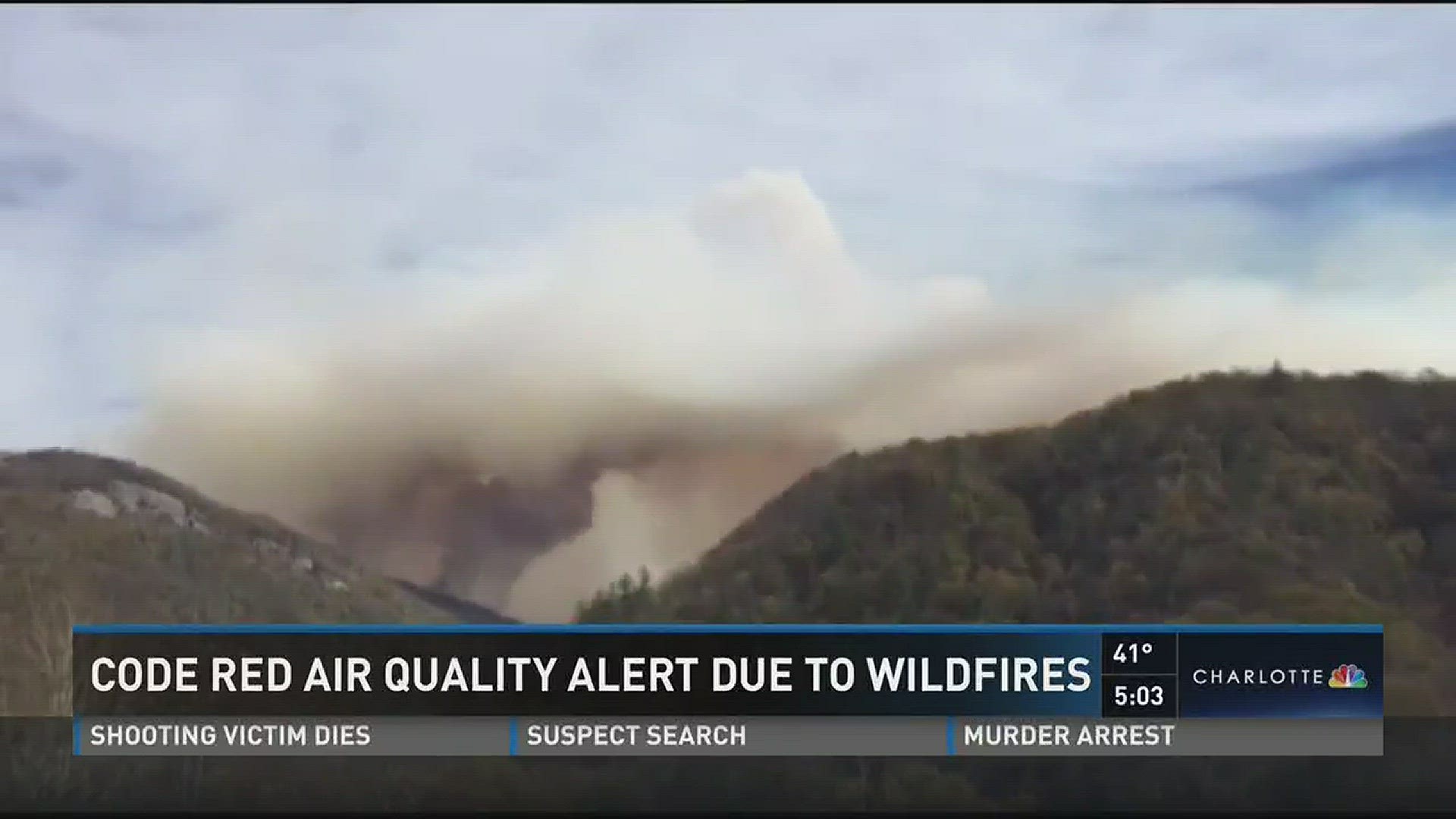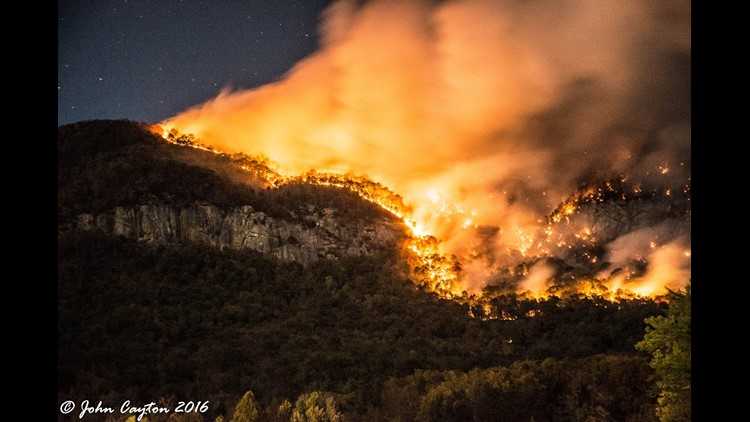CHARLOTTE, N.C. – Chances are, when you stepped outside Wednesday morning, you could smell at least a hint of smoke in Charlotte.
With wildfires continuing to rage in the western half of North Carolina, the Charlotte area has been put under a Code Red air quality alert.
However, the Charlotte area is not forecasted to experience the smoggy conditions that existed Tuesday. But that doesn’t necessarily mean conditions are improving; in fact, the EPA believes they’re worse.
“The wind is coming down the mountains and blowing all the smoke into the Charlotte area,” said Clean Air Carolina’s Terry Lansdell.
According to the EPA, a code red Air Quality Index means everyone may begin to experience some adverse health effects, and members of the sensitive groups may experience more serious effects. The EPA explains the AQI as a yardstick that runs from 0-500. The higher the AQI, the greater level of air pollution and greater the health concern.
A code red alert runs from 151 to 200 on the AQI scale. Charlotte and Mecklenburg County is currently at 151. Experts are urging people to limit their outdoor activity while the dangerous conditions exist.
“We’re seeing that level be high enough to affect everyone at every level,” Lansdell said.
People could also be heard coughing, seen rubbing their eyes or heard blowing their noses as Asheville and surrounding western towns have been experiencing poor air quality, according to Buncombe County Health and Human Services officials.
“With the current air quality level in the 'unhealthy' range in the Asheville area, even healthy people may experience symptoms," said Dr. Jennifer Mullendoor, Health and Human Services medical director. "Everyone should limit their time spent outdoors. Wildfire smoke can be particularly dangerous for children, older adults, and those with heart or lung disease. Individuals in these sensitive groups should avoid all outdoor physical activity at this time."
Mecklenburg Co is under a burn ban as a result of #ncwildfires - What does that mean for your @Panthers tailgate tomorrow? Find out on @wcnc pic.twitter.com/rJSJVGALoV
— Rachel Rollar (@RachelRollar) November 16, 2016
In addition to health risks associated with pollution, a burn ban is in effect for all counties under a code red alert. These counties include Mecklenburg, Cabarrus, Union, Rowan, Iredell, Alexander, Catawba, Lincoln, Gaston, Cleveland, Rutherford, Polk, McDowell, Burke, and Caldwell.
Charlotte-Mecklenburg Schools responded to the Code Red alert Wednesday by suggesting that students remain indoors as much as possible while the alert was in effect. All practices and workouts for athletic teams are limited to a maximum of 45 outdoor minutes. School athletic trainers must also be on-site and present at any outdoor practice or workout with no exceptions.
Unbelievable Photos Of The NC Wildfires
WNC forest fires
This is the latest information available about active fires in U.S. forests and North Carolina state forests, acres involved and containment percentage.
Tellico fire, Nantahala area: 13,679 acres, 68 percent contained.
Knob fire, 8 miles west of Franklin: 1,130 acres, 94 percent contained.
May Branch, west of Nantahala Lake: 175 acres, 98 percent contained. Dick's Creek, 2 miles northwest of Sylva: 728 acres, 94 percent contained.
Cliffside fire, 3 miles northwest of Highlands: 101 acres, 98 percent contained.
Muskrat Valley fire, 7.5 miles southwest of Franklin:103 acres, 90 percent contained.
Old Roughy, north of Santeetlah Lake: 657 acres, 80 percent contained.
Maple Springs, north of Santeetlah Lake: 7,515 acres, 15 percent contained.
Boteler, 6 miles east of Hayesville: 8,967 acres, 43 percent contained. Party Rock,
Chimney Rock: 3,744 acres, 15 percent contained.
Chestnut Knob, South Mountains State Park, 10 miles south of Morganton: 3,900 acres, 20 percent contained.
Moses Creek, northeast of Cullowhee: 103 acres, 98 percent contained. Avey Branch, north of Santeetlah Lake: 1,200 acres, 17 percent contained.
Incident resources for Boteler and Nantahala Branch fires: 21 crews, 64 engines, 6 helicopters, 1 fixed wing, 16 dozers, 4 water tenders, 891 personnel
Source: InciWeb Incident Management System



